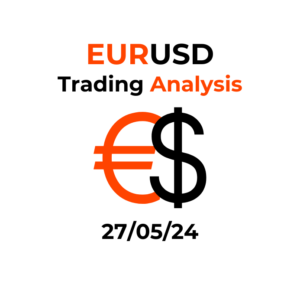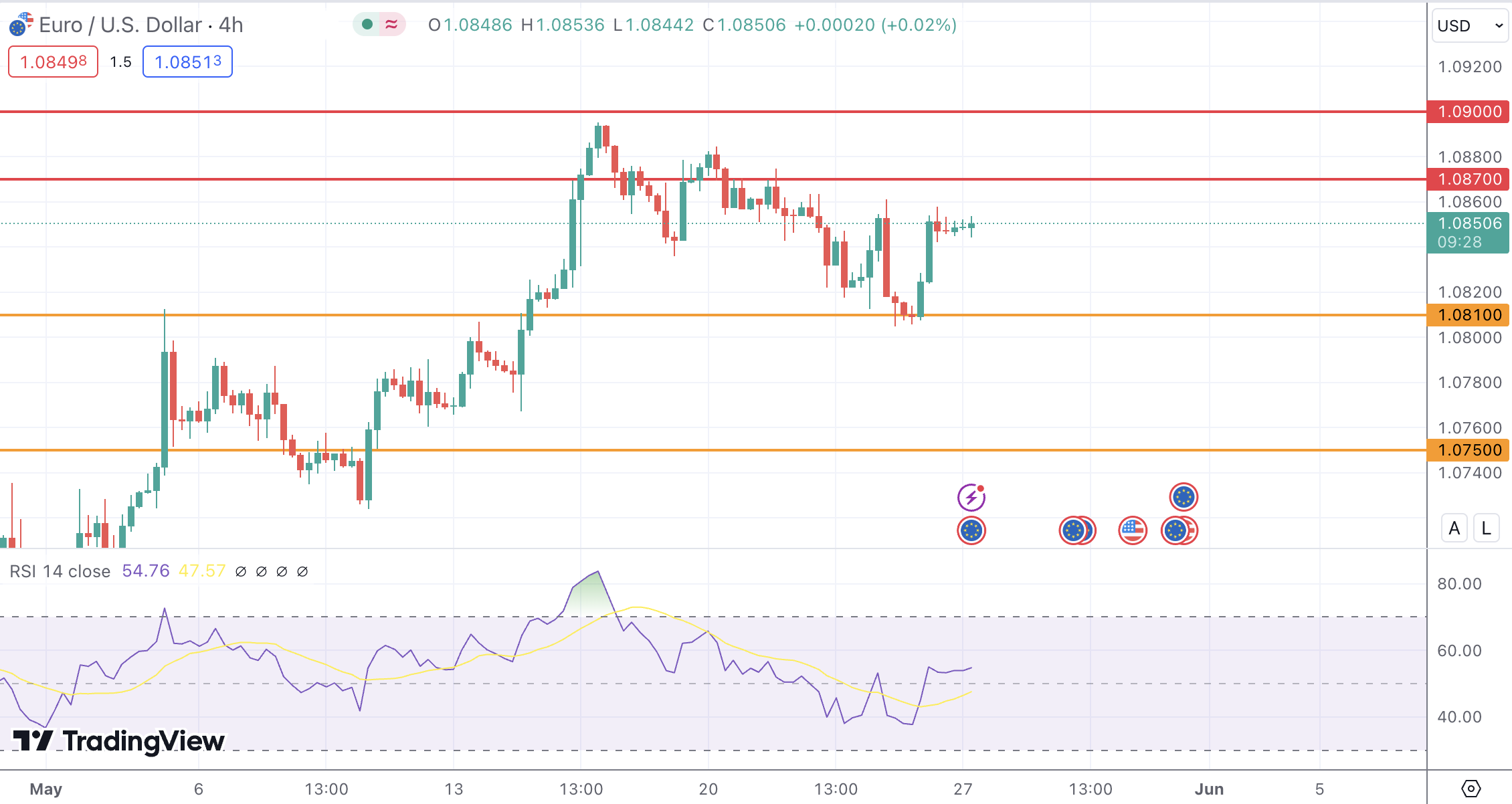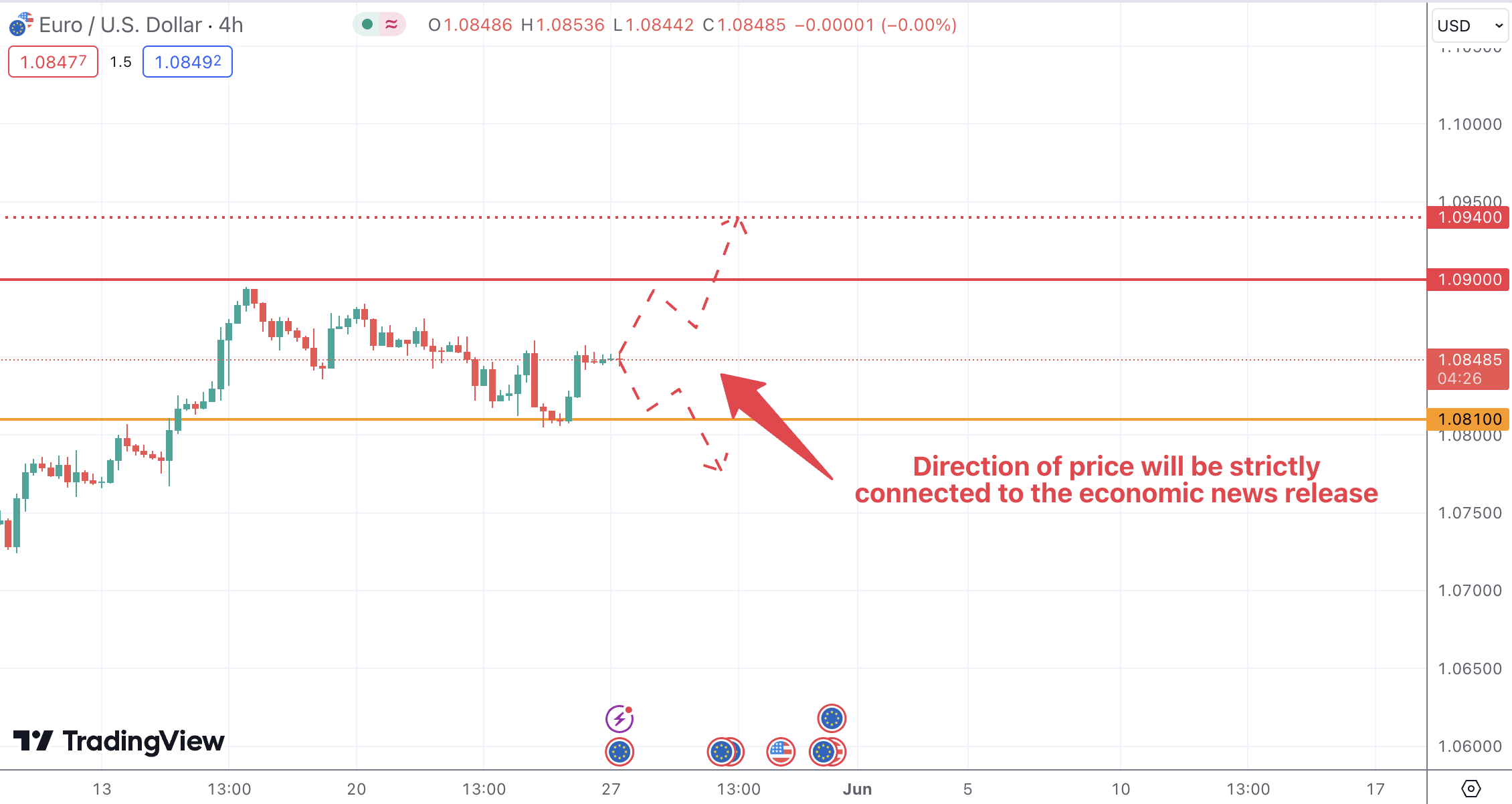Market Dynamics and Recent Performance
The EUR/USD pair has been trading within a relatively narrow band, hovering around the 1.0850 mark, as it consolidates recent movements. Last week, the pair experienced some volatility but ultimately closed slightly lower, snapping a five-week winning streak. This movement was influenced by mixed economic data and shifting sentiment regarding future monetary policy decisions from the European Central Bank (ECB) and the Federal Reserve (Fed).
German IFO Business Climate Index data released early this week indicated a slight decline, which did not significantly impact the market. The pair’s lack of direction can also be attributed to the Memorial Day holiday in the United States, leading to reduced trading volumes.
Technical and Fundamental Influences
Technically, the EUR/USD remains within an ascending regression channel that has been in place since mid-April. The Relative Strength Index (RSI) on the 4-hour chart is slightly above 50, suggesting a lack of clear bullish momentum. Resistance levels are identified at 1.0870, 1.0890-1.0900, and 1.0940, with support levels at 1.0825, 1.0810-1.0800, and 1.0750.
The fundamental landscape has been marked by contrasting messages from central bank officials. ECB President Christine Lagarde has expressed confidence in the eurozone’s inflation outlook, while the Fed’s latest minutes reflected ongoing concerns about achieving their inflation target, even with the recent lower-than-expected CPI data.
Looking Forward
In the coming week, the EUR/USD is expected to remain sensitive to economic data releases and central bank communications. Key events to watch include the US Consumer Confidence data and inflation figures from Germany, the Eurozone, and the US Personal Consumption Expenditures (PCE) Price Index. These data points will provide further insight into the health of the economies and the potential direction of monetary policy.
Should the EUR/USD break above the 1.0890-1.0900 resistance zone, it could target the next levels at 1.0940. Conversely, a failure to maintain support at 1.0825 could see the pair testing lower levels around 1.0800. The pair’s direction will largely depend on how market participants interpret the upcoming data in relation to the central banks’ future actions.
Key Takeaway
The EUR/USD pair is currently navigating a complex landscape of technical levels and fundamental factors. The upcoming economic data releases will be crucial in determining the pair’s direction, with traders closely monitoring central bank rhetoric and inflation data. The key levels to watch are the resistance around 1.0890-1.0900 and the support at 1.0825 and 1.0800.



